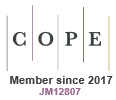Just Accepted
This article has been peer reviewed and accepted for publication. It is in production and has not been edited, so may differ from the final published form.
A pragmatic workflow towards the generation of pXRF datasets for large-scale soil monitoring programs
Abstract
Portable X-ray fluorescence (pXRF) is an effective tool for the rapid estimation of total elemental concentrations of soil samples, providing a viable alternative to conventional laboratory methods. Developing an optimised and efficient data collection protocol is crucial for processing large sample numbers. Factors such as sample preparation methods (e.g., packed sample cups with thin films or scanning through plastic bags), and manufacturer calibration modes and associated analysis times can influence pXRF performance. This study evaluated the performance of different containers (sample cups with 4 µm thin films versus 50 µm plastic bags) and detection modes (Soil versus Geochem) to determine the most time-efficient scanning protocol under standard instrument operation while maintaining acceptable accuracy for large-scale total elemental concentration analysis. Using 130 representative soil samples from the CSIRO National Soil Archive, results showed strong correlations for most elements (e.g., K, Ca, Ti, Fe, Cu, Zr) across different containers. However, Mg, a low atomic number element, showed poor correlations (R2 = 0.05), likely due to the limits of detection (LOD) of the Geochem mode. Al and Si exhibited better R² values but showed a low Lin’s Concordance Correlation Coefficient (LCCC) value of less than 0.1. Among different modes, elements including K, Ca, Ti, Fe, Cu and Zr maintained strong correlations (R2 > 0.65 and LCCC >0.7). Scanning soil samples through plastic bags in Geochem mode is recommended due to its shorter measurement and sample preparation time and ability to detect lighter elements (Mg, Al, and Si). This optimised protocol will support national scale soil monitoring programs with large sample sizes (e.g., n >3,000 soil samples). For future work, elemental data acquired can support for example investigations of how soil mineralogy influences carbon storage capacity and provide insights to the biological-chemical stabilisation of soil organic carbon.
SR25028 Accepted 11 June 2025
© CSIRO 2025



